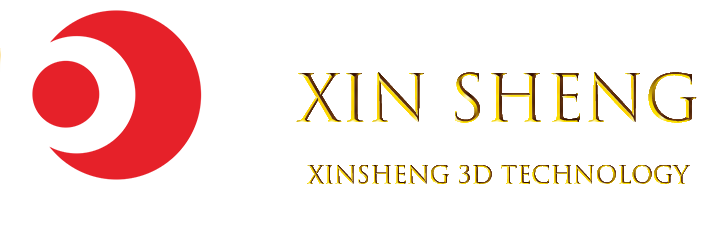您好,欢迎来到 XXXXX 官方网站!
010-87128888


Product Center
Xinsiwei team's mission is to "make product development faster"; serve sincerely, think hard, and achieve greater deeds with our customers!
vacuum coating
Vacuum coating is the process of placing the material to be plated and the substrate to be plated in a vacuum chamber, heating the material to be plated in a certain way, making it evaporate or sublimate, and flying sputtering to the surface of the substrate to be coated.
Coating method and classification
Film formation under vacuum conditions has many advantages: Can reduce evaporation materials of atoms and molecules in the process of flying to the substrate in the molecular collision, reduce the activity of gas molecules and the chemical reaction between evaporation source material (such as oxidation, etc.), and reduce the film-forming process of gas molecules into the film as the amount of impurities, thus providing membrane layer of density, purity, deposition rate and adhesion with the substrate. Usually vacuum evaporation requires that the pressure in the film forming room is equal to or less than 10-2Pa, and the pressure is required to be lower for the evaporation source and the substrate distance is far away and the film quality is very high.
It is mainly divided into the following categories:
Evaporation coating, sputtering coating and ion plating.
Evaporative coating: Evaporation of a substance by heating to deposit it on a solid surface is called evaporative coating. This method was first proposed by M. Faraday in 1857, and has become one of the commonly used coating technologies in modern times.
Evaporating materials such as metals and compounds are placed in the crucible or hung on the hot wire as the evaporation source, and the workpiece, such as metal, ceramic, plastic and other substrates are placed in front of the crucible. After the system is pumped to a high vacuum, the crucible is heated to evaporate the substance in it. Atoms or molecules of evaporating material are deposited on the substrate surface by condensation. Film thickness can range from hundreds of angstroms to several microns. The film thickness is determined by the evaporation rate and time of the source (or by the amount of charge) and by the distance between the source and the substrate. For large area coating, rotating substrate or multiple evaporation sources are often used to ensure the uniformity of film thickness. The distance from the evaporation source to the substrate should be less than the average free path of the vapor molecules in the residual gas, so as to avoid the collision of the vapor molecules with the residual gas molecules to cause chemical reactions. The average kinetic energy of vapor molecules is about 0.1 ~ 0.2 electron volts.
There are three types of evaporation sources. (1) Resistance heating source: refractory metal such as tungsten, tantalum made of boat foil or filamentous, through the current, heating in the above or placed in the crucible evaporation material. Resistance heating source is mainly used to evaporate Cd, Pb, Ag, Al, Cu, Cr, Au, Ni and other materials. (2) High frequency induction heating source: heating crucible and evaporating material with high frequency induction current. ③ Electron beam heating source: suitable for high evaporation temperature (not less than 2000[618-1]) of the material, that is, electron beam bombardment of the material to make it evaporate.
Compared with other vacuum coating methods, evaporation coating has higher deposition rate and can be used to produce simple and refractory compound films.
The molecular beam epitaxy method can be used to deposit high purity single crystal film layer. Molecular beam epitaxy device for growing Doped GaAlAs single crystal layers. The jet furnace is equipped with a molecular beam source. When it is heated to a certain temperature in ultra-high vacuum, the elements in the furnace are shot into the substrate as a molecular beam. When the substrate is heated to a certain temperature, the molecules deposited on the substrate can migrate and grow crystals according to the lattice order of the substrate. The required stoichiometric ratio of single crystal films of high purity compounds can be obtained by molecular beam epitaxy method. The slowest growth rate of the films can be controlled at 1 monolayer/second. By controlling the baffle, a single crystal film of desired composition and structure can be made precisely. Molecular beam epitaxy is widely used in fabrication of various optical integrated devices and superlattice films.
Sputtering coating: when bombarding the solid surface with high-energy particles, the particles on the solid surface can obtain energy and escape from the surface and deposit on the substrate. Sputtering began to be used in film plating technology in 1870, and was gradually used in industrial production after 1930 because of increased deposition rate. Usually the material to be deposited is made into a plate, the target, fixed on the cathode. The substrate is placed on an anode directly opposite the target, several centimeters from the target. After being pumped to a high vacuum, the system is charged with 10-1 pa of gas (usually argon), and a voltage of several thousand volts is applied between the cathode and anode to produce glow discharge between the two poles. The positive ions produced by the discharge fly to the cathode under the action of the electric field and collide with the target surface atoms. The target atoms that escape from the target surface by the collision are called sputtering atoms, whose energy ranges from 1 to tens of electron volts. The sputtering atoms deposit films on the surface of the substrate. Different from evaporation coating film, sputtering coating film is not limited by the melting point of the film material, can sputter W, Ta, C, Mo, WC, TiC and other refractory substances. The reaction gas (O, N, HS, CH, etc.) is added into Ar gas, and the reaction gas and its ions react with target atoms or sputtering atoms to generate compounds (such as oxides, nitride, etc.) and deposit on the substrate. High frequency sputtering method can be used to deposit insulating film. The substrate is mounted on the grounded electrode and the insulating target is mounted on the opposite electrode. One end of the hf power supply is grounded, and the other end is connected to an electrode with an insulated target through a matching network and a separate DC capacitor. After switching on the high frequency power supply, the high frequency voltage constantly changes its polarity. The electrons and positive ions in the plasma hit the insulating target at positive and negative half cycles of the voltage. Because the electron mobility is higher than the positive ion, the surface of the insulating target is negatively charged, and the target is at negative bias potential when the dynamic equilibrium is reached, so that the positive ion sputtering to the target continues. Magnetron sputtering can increase the deposition rate by nearly one order of magnitude compared with non-magnetron sputtering.
Ion plating: the molecules of evaporating materials are ionized by electron collision and deposited on the solid surface with ions, which is called ion plating. This technique was proposed by D. Mettox in 1963. Ion plating is a combination of vacuum evaporation and cathode sputtering. An ion plating system FIG. 4[Schematic diagram of ion plating system], the substrate platform as the cathode, the shell as the anode, filled with inert gas (such as argon) to produce glow discharge. Molecules vaporized from an evaporation source ionize as they pass through a plasma region. Positive ions are accelerated to the substrate surface by negative voltage. Unionized neutral atoms (about 95% of the vaporized material) are also deposited on the substrate or the wall surface of the vacuum chamber. The adhesion strength of the film is greatly improved by the acceleration of the ionized vapor molecules by electric field (ion energy is about several hundred ~ several thousand electron volts) and the sputtering cleaning of the substrate by argon ion. The ion plating process combines the characteristics of evaporation (high deposition rate) and sputtering (good film adhesion), and has good diffraction, which can be used for the coating of complex shape workpiece.
Contact us
Ningbo Xinsiwei 3D Technology Co., Ltd.
Address: 299 Xinmei Road, High-tech Zone, Ningbo
City, Zhejiang Province, China
Phone: 86-0574-27860966
Mobile: 13484275657
Email: xsw02@hsemodel.com
Ningbo Xinsheng 3D Technology Co., Ltd.
Address: No. 1166, Lu'an Road, Zhouxiang Town,
Cixi City, Ningbo City, Zhejiang Province

Sweep and follow us
Contact us
Ningbo Xinsiwei 3D Technology Co., Ltd.
Address: 299 Xinmei Road, High-tech Zone, Ningbo City, Zhejiang Province, China
Tel: 86-0574-27860966
Mobile phone: 13396628889 13586546027
E-mail: 13586546027 @lmc9.com
13396628889@Lmc9.com
Ningbo Xinsheng 3D Technology Co., Ltd.
Address: No. 1166, Lu'an Road, Zhouxiang Town,
Cixi City, Ningbo City, Zhejiang Province

Sweep and follow us

